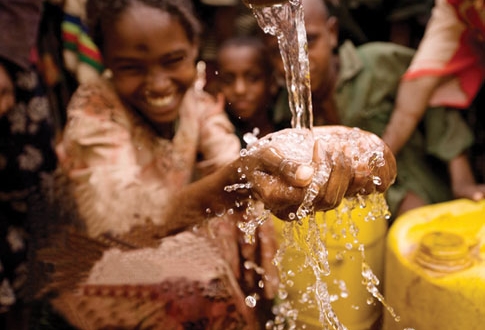
Realistically, the UN resolution is unlikely to have any perceptible impact in India in terms of access to safe drinking water in rural and urban areas unless a coordinated national strategy is formulated by extensive consultations with the states and municipalities. Apart from the consideration of availability of adequate quantity of water, the main problem in India is that of poor water quality, and its consequent health impacts. More than 21% of communicable diseases in India are due to unsafe water which also is the single largest reason for child mortality in the 0-5 age group. According to recent estimates, about 1.5 million children below the age of five years die each year from water-borne diseases specially diarrheoa.
Availability of safe drinking water and sanitation is still a major issue in both urban and rural India. Microbial, fluoride, nitride, arsenic and salinity contaminants have created water quality problems all over the country. One will be hard pressed to identify even one major or medium Indian urban centre where people can safely drink water from the taps supplied by the municipalities without additional treatments at homes. The phenomenal growth of the bottled water industry in India during the last decade is a direct result of poor water quality. We estimate that the poor water quality in India is reducing its GDP by some 5% to 7%.
In South Africa right to access to water is enshrined in the Constitution which states that everyone has the right to have access to basic water supply and basic sanitation. It requires the state to take reasonable legislative and other measures within its available resources, to achieve the progressive realization of the right. The Constitutions of other African countries like the Democratic Republic of Congo, Ethiopia, Gambia, Mauritania, Tanzania, Uganda and Zambia, also include the obligation of the state to provide clean and safe water to the people. However, irrespective of these constitutional requirements, these countries have made only incremental progress.
Suprement Court Ruling and Water Resource Management in India
In addition, the present trend is to treat water as a human right is basically for drinking. However, globally less than 8% of water is used for drinking. In India, it is even less. For countries like India and Egypt, some 90% of water is used for agriculture. No food or electricity can be produced without water. Yet water required for agriculture production and electricity generation do not come under human right consideration. People cannot survive without food (another human right) and food cannot be produced without water. The UN resolution thus needs to be revisited to fill in such gaps.
It should be noted that the Supreme Court of India has ruled that both water and sanitation are part of the constitutional right to life (Article 21). The apex court has stated the ‘the right to access to clean drinking is fundamental to life and there is a duty on the state under Article 21 to provide clean drinking water to its citizens’.
In India, Food Security Bill, 2011 is a hot button issue. Active consultations with state governments are being undertaken for finalizing the modalities of right to access of food to poor families. Administrative and financial responsibilities are expected to be shared between Central and state governments. If right to food becomes a requirement, the implications of this right for the current water, energy and environmental management strategies need to be carefully analyzed. One affects the others, and, in turn, is affected by the others. Unless all these strategies can be carefully coordinated, the country will most certainly face serious and unexpected adverse impacts in the coming years.
Rajiv K. Gupta is a senior IAS officer from Gujarat, and Asit K. Biswas is the founder of the Third World Centre for Water Management, Mexico, and Distinguished Visiting Professor, at Lee Kuan Yew School of Public Policy, Singapore, and Mentor of the Indian Institute of Technology, Bhubaneswar.






